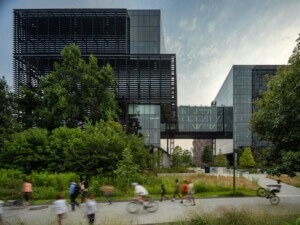A 755,000-square-foot tech facility in Atlanta embodies the latest evolution of the city as a hub for innovation and creativity, and also stands as a symbol for the changes happening at the firm behind it. John Portman Architects, newly dubbed Portman Architects, designed CODA at Tech Square in collaboration with Georgia Tech to be a tech hub with one of the largest data centers in the Southeast. It’s no surprise that as the firm transitions into partner-based leadership and new work in tech-centric architecture, it also pushes forward an evolved identity.
CEO Jack Portman, son of the late John Portman, told AN that this project is the next big step in the company’s 66-year story. “Each evolution of our firm has been a motivation to create anew,” said Portman. “My father created the super atrium, then modern mixed-use developments, and he was the first to move his firm and work overseas in China. CODA is one of these evolutionary points in our firm’s history. We’re back in Atlanta and looking to advance the future of design.”
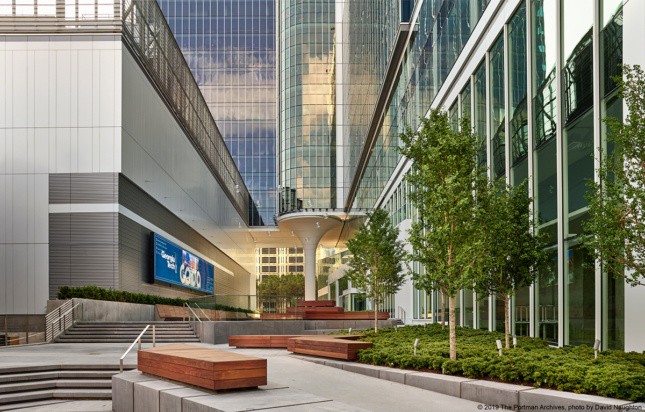
Portman Architects is currently working on three projects in Midtown Atlanta—north of downtown and east of the university. CODA is the first building completed in what will be the city’s T (tech) Zone. At 21 stories, the glass-clad, L-shaped building features room for 3,500 tech employees, as well as students and faculty, and is designed around a series of six, three-story vertical atriums that connect various wings.
One of its defining design moments is the white spiral staircase—the tallest freestanding, helical stair in the world—which links the building’s “Collaboration Core.” According to Luca Maffey, vice president and design director of CODA, the piece of interior infrastructure allows views past the end of the city and it only takes a few minutes to climb to the top. The staircase, which is located right near the facade, also overlooks the grand piazza that cuts through the center of the site. Maffey said this outdoor living room-like space is already attracting people to the building.
“Atlanta is known for great, internal and insular spaces, largely thanks to Portman himself,” he said. “CODA really opens up to the public and the streets with this plaza and with its transparency. It’s now a reference point for not only navigating Midtown but it also is a destination in and of itself.”
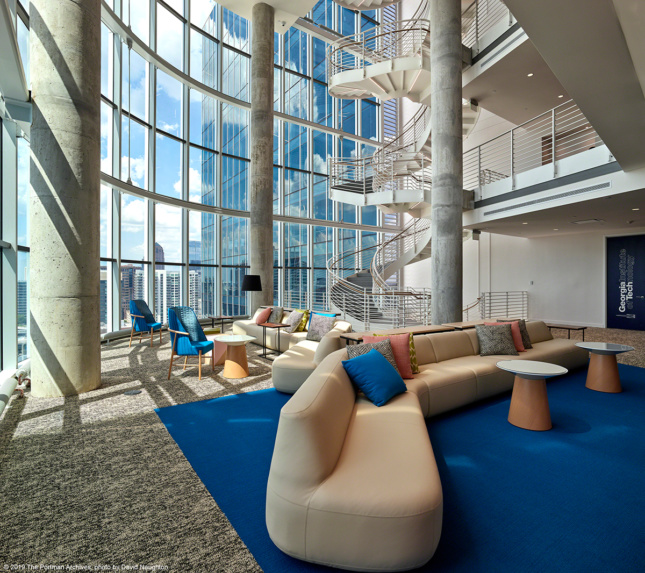
Portman Architects integrated almost 40,000 square feet of restaurant and retail space on the ground floors in order to enhance that indoor-outdoor connectivity. A surprising exterior column that resembles a martini glass extends from the lower levels of the building and punches the plaza below. The entirety of CODA’s lower half also sits in dialogue with a historic, 1920s building on the site. Major design moments such as this elevate what could have been a boxy office structure with a glass curtain wall. Instead, these moves activate the efficiency of the site both in a sustainable aspect and in its circulation.
Developed by Portman Holdings (the development company also started by John Portman), CODA is the first project Portman Architects has ever done for Georgia Tech, the largest tenant in the building. Other tech companies are starting to fill in the rest of the spaces, while others are finding a way to be next to CODA, Jack Portman says.
“The 1.5 million square feet of expansion happening at tech square is the result of the excitement created by the design of CODA,” he said.
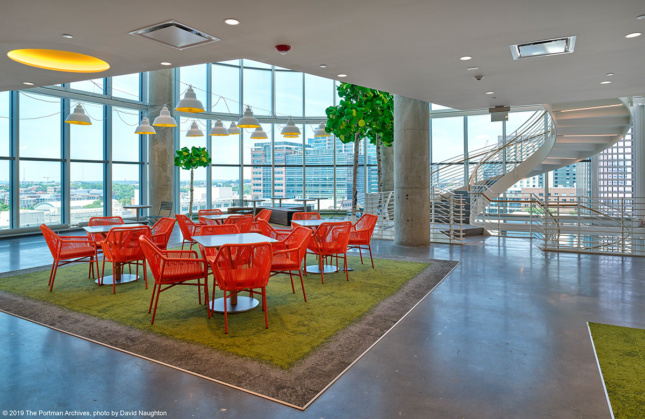
The firm recently started construction on the adjacent Anthem Technology Center, which features a cluster of four towers connected at the core. Unlike CODA, not all the atriums will be connected, but the buildings will circle around a staircase that goes up to the top floor. Overall, the architecture is quite different—sections of the structures feature varied materials and textures, while CODA is pinstriped, calm, and elegant, Maffey said.
“On the bottom half of the building, we wanted something that was more active and played with the light more,” he said. “The cladding has small folds of silver metal that will interact with the sun as it changes throughout the day.”
Portman Architects is currently designing a “sibling” for the Anthem Tech Center which includes another building with three, interlocking facades.
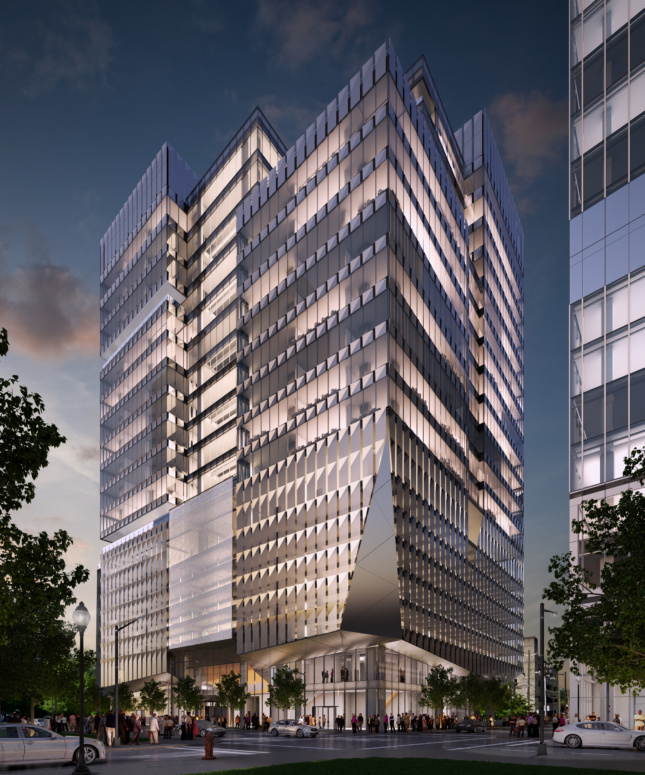
All of these high-profile local projects in Tech Square coincide with major changes happening at the firm.
“Ten years ago, my father started to think about how his firm would continue to evolve once he stepped down,” Portman told AN. “He then created a partnership that better represented our motivation for working as part of a team, giving credit to everyone involved. The name change also helps differentiate buildings that we design now versus what he worked on.”
Along with a new name comes a new visual identity for the firm as well. Portman Architects’ new logo is a six-point star, or a spark, which pays tribute to Portman’s old signature. Maffey noted the spark also alludes to the company’s history sparking change in the field of architecture. He now believes the firm is positioning itself to ignite more innovation in the future.
“The firm’s evolution has also been in this crescendo mode,” he said. “Right now the energy in our office is higher, the average age of our employees is younger, and we’re pursuing new technologies to create our architecture. There’s also no singular approach to the way we work, and we’re more collaborative than ever. Everybody here is a Portman Architect.”










